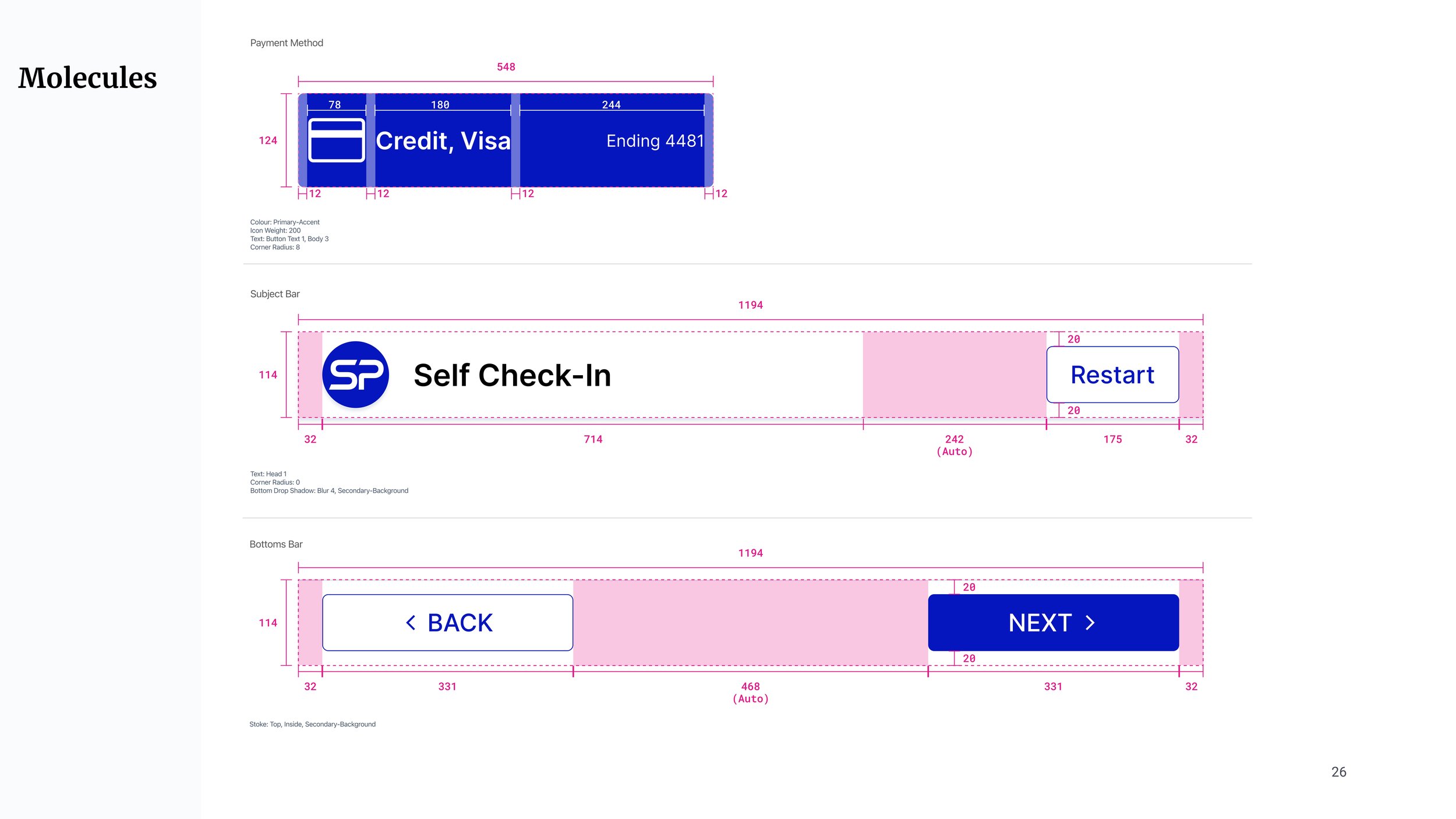UI/UX Case Study
Self Returning System
A Solution for Clothing Retailers
Project Brief
Scan Pro is a self-returning system, using RFID tags and machine learning, designed to detect damages and policy abuses and protect company profits.
Project Type
Final Capstone Project
Timeline
0ct - Nov 2023 / 8 Weeks
Tools
Figma, Final Cut Pro
Skills
UX Research, UI Design System, Branding, Marketing
P R O B L E M S P A C E .
The impact of return fraud is undeniably substantial, affecting retailers' profitability and operational efficiency.
What is return fraud?
Receipt fraud
When a customer returns an item using a fake receipt, no receipts or a different credit card to obtain refunds.
“I lost my receipt, can you refund it back to this credit card?”
Switch fraud
When a customer purchases an item to use it temporarily, then returns it for a full refund.
“I only wore it once and didn’t like it.”
Bricking
When people steal a product and then attempt to return it to the store for a refund.
“I got it as a gift, but wasn’t given a receipt.”
Employee fraud
When a customer purchases an item for one price and then switches it out for another used or damaged item before returning the product for a refund.
Wardrobing
When a customer removes valuable parts of the purchased device to sell for a profit and then returns the item as defective.
Returning stolen items
When employees participate in return fraud, either by stealing products or accepting a cash refund for items that were never purchased.
Retail Return Rate
The average return rate in the retail industry is 16.5%.
Vogue Business, 2022
Return Fraud Rates
50% of clothing returns are fraudulent or damaged.
Capital One Shopping, 2023
Amount of Fraudulent Returns
For every $100 in returned merchandise, retailers lose $10.30 to return fraud.
National Retail Federation, 2022
As a result, clothing corporations experience,
Profit Loss of 1.2%.
To put this into perspective, this translates to
$52.8 million USD
$72.5 million USD
in the year 2022 alone.
Here is what the Industry Experts said.
“I spent a week on a custom dress, but the client wanted a refund, citing signs of wear. Despite the challenge, I prioritized customer satisfaction, crucial for a small business where every client matters.”
Robin, Former Clothing Business Owner, Pinkly Ever After
-
Business owners prioritize long-term success by placing customer satisfaction and brand reputation above immediate sales.
“On short-staffed days or during busy seasons, the entire team struggles when complicated return transactions occur at the register.”
Waris, Visual Manager, Urban Outfitters
-
A high volume or complexity of return transactions affects employee efficiency.
“I remember a day when we had $7K worth of stylist returns, significantly impacting our sales forecast. Despite some damaged items, we made an exception for customer satisfaction.”
Anthony, Store Manager, Old Navy
-
A high volume of returns negatively impacts daily sales goals, and no additional payroll is allocated to address it.
How might we assist clothing companies in reducing
the acceptance of fraudulent or damaged items
in order to protect their profitability?
F I N A L P R O D U C T .
Scan Pro is a self-returning system with Enhanced Customer Convenience, advanced Fraud Prevention against return fraud, and heightened Labor Efficiency through automated return transactions.
Technology Integration
-
An RFID(Radio Frequency Identification) tag is a microcomputer chip that stores product and purchase information, providing both the company and customers with increased flexibility and convenience.
-
The machine learning component is well-trained to detect damage levels and determine eligibility, ensuring a simplified operation with clear and easy directions for customers.
Self Returning System
Quality Inspection
Scanning Items
User Flow
1. Start the transaction
2. Scan the price tag
3. Inspect the returning items
4. Getting a refund
(Please unmute to listen to the voice support feature.)
D E S I G N T H I N K I N G .
Design Goals
Human-Centred
To accommodate users unfamiliar with the system, I've prioritized visualizing each screen to focus on a single task, minimizing buttons for simplicity, and ensuring a fast and easy process.
Accessibility
To enhance accessibility, I've added voice support on key screens, assisting users through text and a system voice. This ensures customers still feel the interactive nature they experience in a retail setting.
Damage Detection
The primary focus of the entire system is to detect damages in returning items. This not only protects the business from various aspects of return-related losses but also provides customers with the convenience of a self-service system.
Sketches
I T E R A T I O N S .
FIVE
Research Interviews
THREE
Rounds of Usability Tests
TWENTY
In-person Participants in Total
Usability Test Findings
Finding 1
Unfamiliarity with the system, and need of visual guidance.
Finding 2
Improve wording for clarity and user-friendliness.
Finding 3
Address visibility of key buttons to guide users in the right direction.
More importantly, I neglected the end users—CUSTOMERS—and placed excessive emphasis on protecting the business. The final screen displays a damage detection result and denies a refund.
‘Perhaps, yes, I intended to reject any possible fraudulent return requests.’
After two rounds of usability tests, I encountered a significant challenge and felt that my entire design purpose was FAILING. My iteration focus shifted to a complete reconsideration of the transaction process, aiming to provide a general return process that accommodates the majority of refund cases while still filtering out potential fraudulent items.
Wireframes
(Please swipe to view progress.)
T R Y I T Y O U R S E L F !
D E S I G N L I B R A R Y .
Brand Identity
Typography
Original Typeface: NASALIZATION
Modified Letterforms: Angled 68.42°, spaced -3.5%
Thickness: 24 px
Final Wordmark
Logo
Typeface
Font
Colour Scheme
Measurement
M A R K E T I N G .
B2B Targeting
Scan Pro is a B2B product targeting end-user customers. The marketing focuses on corporate decision-makers, and the interface will be customized to the company's design.
Explore the Scan Pro marketing website.
R E F L E C T I O N .
Scan Pro marked my initiation into a project that demanded a comprehensive design process, including research, interviews, analysis, sketches, wireframes, usability tests, iteration, prototypes, branding, marketing, and numerous presentations.
As I transitioned from the fashion industry to UX design, my goal was to tackle a lasting challenge using new technology. Starting from the idea of a returning app with Augmented Reality or 3D scanning for home use, my journey changed through research and interviews, leading me to develop a system tailored for retail spaces.
Engaging with retailers already using 'self-checkout,' I explored and tested the system's strengths and weaknesses, eventually conceptualizing the 'Self Return Kiosk' idea.
Incorporating high-tech features such as Machine Learning, AI, and RFID posed a learning curve, filled through research, study, and connection with industry experts.
The subsequent challenge was translating this technology into a user-friendly UI and a human-centered UX, which isn't quite out there yet.
My initial wireframe was overly focused on the failure path, highlighting damage detection, while neglecting the positive user experience. After two iterations, I carefully crafted a 'successful path' accommodating both eligible and ineligible items. This design ensures a swift and easy return process for customers, enhancing employee efficiency while protecting the company from potential losses as well.
That was the true beauty of my project goal, Scan Pro. The problem started from an employee perspective, the goal was to reduce corporation's loss, but most of all, it will benefit the end user, customers the most for long-term success.






















































